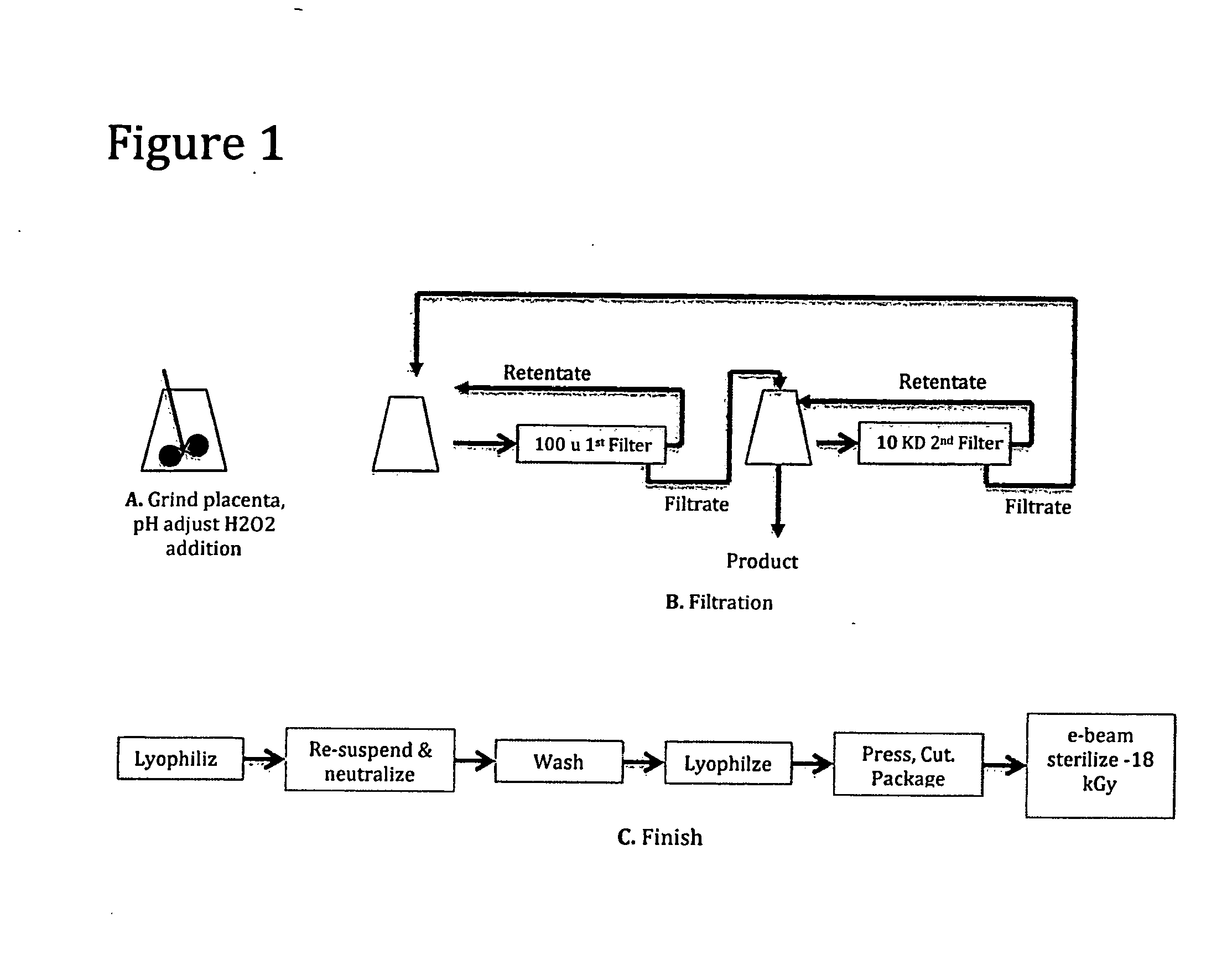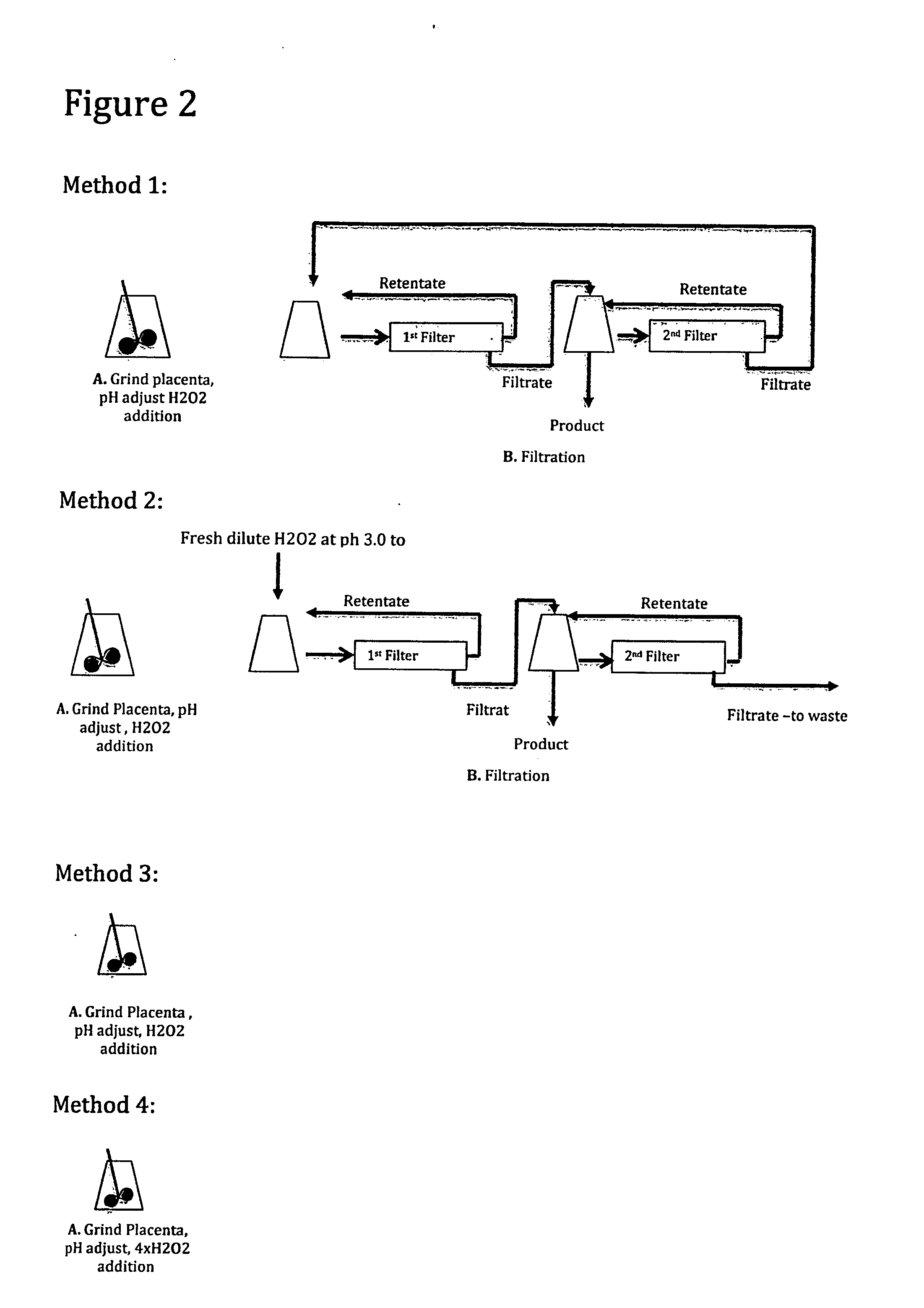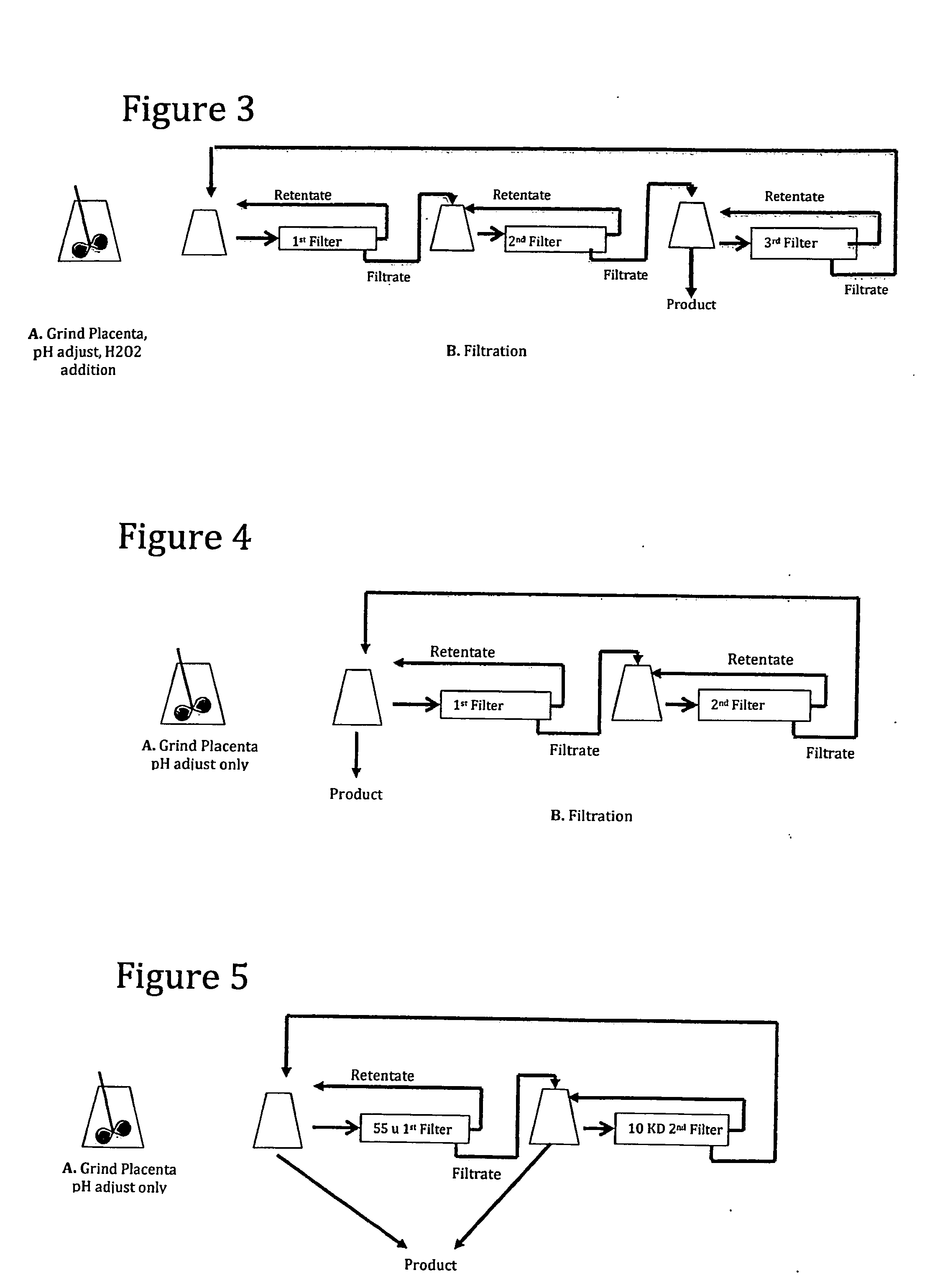Decellularized small particle tissue
a small particle and tissue technology, applied in the field of decellularization and tissue production, can solve the problems of difficult to produce small particle tissue, unsatisfactory decellularized tissues in one way, and inability to retain debris and cellular materials, etc., to speed up the decellularization process, less manipulation of reagents, and high cost
- Summary
- Abstract
- Description
- Claims
- Application Information
AI Technical Summary
Benefits of technology
Problems solved by technology
Method used
Image
Examples
example 1
[0078]This Example sets forth the materials and methods used in Examples 2-12.
Hydrogen peroxide used was from Acros Orrganics
2N NaOH and 2N HCL were from Fisher Scientific
Homegenizer used was a OMNI brand model GLH
Endotoxin analysis was done by USP method
Samples for protein analysis were digested in a pepsin—acetic acid solution.
Collagen content was determined by Sirius Red method from Chondrex, Inc.
Fibronectin content was determined by the QuantiMatrix human fibronectin ELISA kit from Milipore.
Laminin content was determined by the QuantiMatrix human fibronectin ELISA kit from Milipore.
Glycosaminoglycan content was determined by the Blyscan Assay from Biocolor inc.
Elastin content was determined by the Fastin Assay from Biocolor, inc.
example 2
[0079]The following Example demonstrates a method of making decellularized small particle tissue from human placenta. A schematic flow of this method can be found in FIG. 1.
Human placenta including the attached umbilical cord and attached amnion and chorionic membrane were obtained from a normal birth. The tissue was obtained after blood was allowed to gravity drain from the cord into a bag for separate purposes. The placenta tissue was stored at −72 degrees C. until all appropriate viral testing and donor history could be reviewed by a qualified medical director in order that it could be released for research and development.
Grinding, pH Adjust and H2O2 Addition
[0080]772 grams of tissue was thawed overnight in a refrigerator and brought to room temperature on the day of processing. It was cut into small pieces (<3 cm in diameter), re-suspended in approximately 1.2 liter sterile water and then homogenized with a hand held homegenizer. A sample of untreated tissue was taken at this t...
example 3
[0085]A human placenta was processed similar to the decellularization and particle size reduction process of Example 2 and FIG. 1 except for the following changes.
The weight of the placenta on removal from the freezer was 465 grams.
The cut up placenta was homogenized with a Waring type blender.
The solids content of the ground unprocessed tissue material was 5.2%.
After the H202 addition, the slurry was mixed for an hour prior to filtration.
After filtration, approximately 85% of the starting material was captured as 2nd filter retentate and approximately 15% of the starting material was captured by as first filter retentate.
The filter used in finish processing step to wash the product had a 10 KD pore size.
[0086]The resulting product had the following characteristics:
The collagen content of the product as a percentage of dry material was equal to approximately 53% which is equal to 63% of the collagen content of pre-processed thawed and ground placenta as a percentage of dry material....
PUM
| Property | Measurement | Unit |
|---|---|---|
| pore sizes | aaaaa | aaaaa |
| pore size | aaaaa | aaaaa |
| particle size | aaaaa | aaaaa |
Abstract
Description
Claims
Application Information
 Login to View More
Login to View More - R&D
- Intellectual Property
- Life Sciences
- Materials
- Tech Scout
- Unparalleled Data Quality
- Higher Quality Content
- 60% Fewer Hallucinations
Browse by: Latest US Patents, China's latest patents, Technical Efficacy Thesaurus, Application Domain, Technology Topic, Popular Technical Reports.
© 2025 PatSnap. All rights reserved.Legal|Privacy policy|Modern Slavery Act Transparency Statement|Sitemap|About US| Contact US: help@patsnap.com



